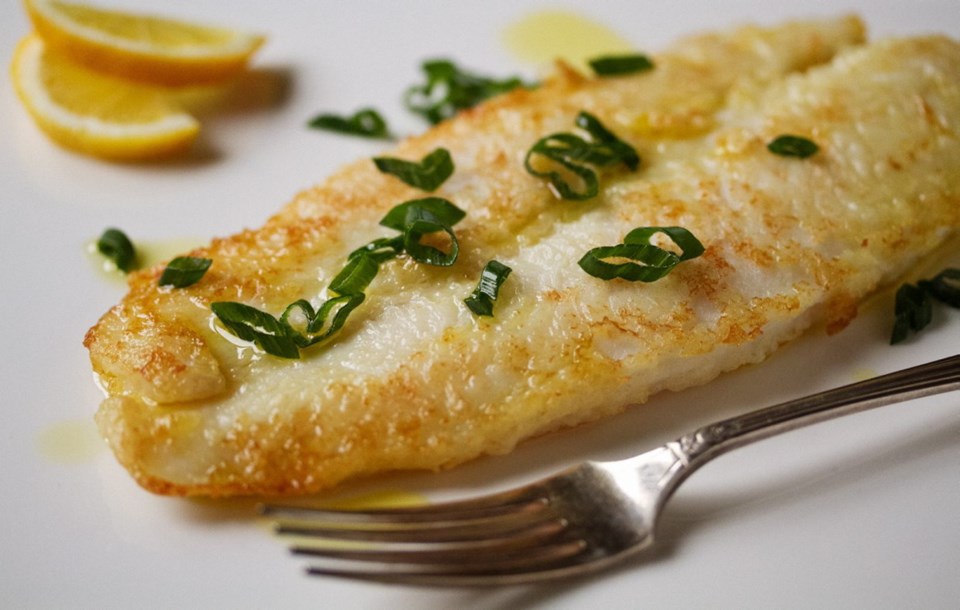Dear Eric: Just recently I ate a white fish called basa. It was very delicious and no bones.
Americans say it comes from the polluted Mekong River, while the Australians say that the fish comes from fish farms near the Mekong River and is highly recommended. We need your advice.
Al
Dear Al: With the name basa, one might think it’s related to bass, a fish Canadians cast for in local rivers and lakes. Like bass, it is a freshwater fish, but it’s not related to that species. It is a type of catfish and its Latin name is Pangasius bocourti.
We don’t fish for it in Canada. Basa, also called swai and a few other names, is native to Southeast Asia. It is farmed in large numbers in pens around the Mekong River system of Vietnam, as well as in China and Cambodia.
The Seafood Importers Association of Australasia, which represents companies importing fish and shellfish into Australia, is a strong advocate for Vietnamese basa, encouraging increased consumption of and public confidence in these fish.
Basa is described as having large, white fillets with no bones, and flesh that is moist with a light, firm texture and a mild fish flavour. This makes basa, which is often sold frozen or thawed from frozen, a versatile species that can be used in a multitude of recipes and cooking styles, whether in a home or restaurant kitchen.
Adding to basa’s appeal is that it is a low-fat source of protein and is also very budget-friendly. At one supermarket, I saw frozen basa fillets for just 88 cents per 100 grams.
Basa is said to be inexpensive because it grows fast, it’s easily harvested and it’s processed in factories near the farm. Being able to get the fish to market without the expense of maintaining a fleet of fishing boats helps keep the price low.
That low price plus the taste and versatility have made basa a popular fish in Australia and Europe as well as North America.
However, there are some caveats. Questions about the health of Mekong River and the practices used to farm basa will affect your decision to buy the fish.
The Seafood Importers Association of Australasia paints a very rosy picture. On their website, seafoodimporters.com.au, they say basa are grown in one of the most suitable environments for fish-farming in the world. They note the Mekong River, which drains much of the Himalayan snow melt, has one of the largest consistent flows of fresh, clean water on the planet. They add that Australian environmental scientists working for the Mekong River Commission, which monitors water quality at more than 50 sites, confirm that testing over the past 15 years shows no serious contamination of the river.
Other sources, however, strongly suggest the Mekong River, which flows thorough some densely populated countries, is highly polluted.
In the United States, basa from Vietnam has been banned in Louisiana, Mississippi and Alabama after it was claimed that illegal antibiotics turned up in samples of the fish.
But some people have questioned whether that decision was influenced by the fact those three states, which farm a whole lot of their own catfish, were simply protecting their own multimillion-dollar industry.
Two reputable sources that help consumers and businesses make choices about fish consumption are the Vancouver Aquarium’s Ocean Wise Program and, in the United States, the Monterey Bay Aquarium Seafood Watch.
Even these two groups have different opinions about basa.
On its website, oceanwise.ca, the Vancouver Aquarium’s Ocean Wise Program does not recommend consumers buy basa. Aquarium experts say open-cage farming in Southeast Asia is associated with disease outbreaks and infection of wild basa populations. They also note there are also concerns about feed quality, farm operating standards and the biological impact of using wild stock for culturing.
The Monterey Bay Aquarium Seafood Watch’s montereybayaquarium.org website says when it comes to which fish and shellfish consumers should buy, the experts rank them in three ways — best choice, good alternative and avoid. With regard to catfish, they say U.S. farmed catfish is a “best choice” because of the sustainable manner in which it is farmed.
However, the Seafood Watch folk do rate basa as a “good alternative” with some caveats. They say commercial farming of basa, which they call river catfish, in Southeast Asia has increased rapidly in recent years. They say basa has a strong potential to be a sustainable aquaculture species, but there are conservation concerns with the current practice of open cage aquaculture combined with little or no management of these fish farming operations in Asia.
When the Monterey Bay Aquarium Seafood Watch says basa has a strong potential to be a sustainable aquaculture species, I believe it is referring to the fact that there are companies in Vietnam and other countries using best practices, and import associations such as the one noted above, helping to ensure they do.
I prefer to eat locally caught fish. If I were going to purchase basa, I would do a thorough check of the importing company and garner as much information as I could about how the fish they are selling are farmed. If they are proud of their product, they will supply details.
For example, on Canadian importer Bay Point Trading’s website, baypointtrading.ca, you’ll find many pages of information about the Vietnamese basa the company sells.
Eric Akis, author of the Everyone Can Cook series, answers your culinary questions in his Sunday columns. Send your questions by email or write to: Ask Eric, Times Colonist, 2621 Douglas St., Victoria B.C., V8T 4M2. Eric’s columns appear in the Life section Wednesday and Sunday.



